Energy Analysis of a Rotary Drum Bioreactor for Composting Tomato Plant Residues
Abstract
:1. Introduction
2. Materials and Methods
2.1. Plant Residues
2.2. Experimental Apparatus
2.3. Experimental Procedure and Measurements
2.4. Energy Analysis
3. Results and Discussions
3.1. Temperatures Profile
3.2. Heat Generation and Losses
3.3. Composting Phases
4. Conclusions and Recommendation
Acknowledgments
Author Contributions
Conflicts of Interest
References
- Agriculture Statistical Annual Book (ASAB); Ministry of Environment, Water and Agriculture: Saudi Arabia, 2016; p. 298.
- Alkoaik, F. Fate of Plant Pathogens and Pesticides during Composting of Greenhouse Tomato Plant Residues. Ph.D. Thesis, Dalhousie University, Halifax, NS, Canada, 2005; pp. 1–5. [Google Scholar]
- Conway, K.E. An overview of the influence of sustainable agricultural systems on plant diseases. Crop Prot. 1996, 15, 223–228. [Google Scholar] [CrossRef]
- Hogland, W.; Bramryd, T.; Persson, I. Physical and chemical effects of unsorted fractions of industrial solid waste in waste fuel storage. Waste Manag. Res. 1996, 14, 197–210. [Google Scholar] [CrossRef]
- Compost Guy. Available online: http://www.compostguy.com/composting/continuous-vs-batch-composting/ (accessed on 7 December 2017).
- Kalamdhad, A.S.; Singn, Y.K.; Ali, M.; Khwairakpam, M.; Kazmi, A.A. Rotary drum composting of vegetable waste and tree leaves. Bioresour. Technol. 2009, 100, 6442–6450. [Google Scholar] [CrossRef] [PubMed]
- Ajay, S.K.; Kazmi, A.A. Mixed organic waste composting using rotary drum composter. Int. J. Environ. Waste Manag. 2008, 2, 24–35. [Google Scholar]
- Ajay, S.K.; Kazmi, A.A. Effects of turning frequency on compost stability and some chemical characteristics in a rotary drum composter. Chemosphere 2009, 74, 1327–1334. [Google Scholar]
- Rynk, R. Fires at composting facilities: Causes and conditions. Bio Cycle 2000, 41, 54–58. [Google Scholar]
- Haug, R.T. Practical Handbook of Compost Engineering; Lewis Publishers: Boca Raton, FL, USA, 1993. [Google Scholar]
- Rodríguez, L.; Cerrillo, M.I.; García-Albiach, V.; Villaseñor, J. Domestic sewage sludge composting in a rotary drum reactor: Optimizing the thermophilic stage. J. Environ. Manag. 2012, 112, 284–291. [Google Scholar] [CrossRef] [PubMed]
- Stainforth, A. Cereal Straw; Clarendon: Oxford, UK, 1997. [Google Scholar]
- Sobel, A.T.; Muck, R.E. Energy in animal manures. Energy Agric. 1983, 2, 161–176. [Google Scholar] [CrossRef]
- Ghaly, A.E.; Alkoaik, F.; Snow, A. Thermal balance of in-vessel composting of tomato plant residues. Can. Biosyst. Eng. 2006, 48, 6.1–6.11. [Google Scholar]
- Ahn, H.K.; Richard, T.L.; Choi, H.L. Mass and thermal balance during composting of poultry manure and wood shavings mixture at different aeration rates. Proc. Biochem. 2007, 42, 215–223. [Google Scholar] [CrossRef]
- Klejment, E.; Rosiński, M. Testing of thermal properties of compost from municipal waste with a view to using it as a renewable, low temperature heat source. Bioresour. Technol. 2008, 99, 8850–8855. [Google Scholar] [CrossRef] [PubMed]
- Irvine, G.; Lamont, E.R.; Antizar-Ladislao, B. Energy from waste: Reuse of compost heat as a source of renewable energy. Int. J. Chem. Eng. 2010, 10. [Google Scholar] [CrossRef]
- Bach, P.D.; Nakasaki, K.; Shoda, M.; Kubota, H. Thermal Balance in Composting Operations; Research Laboratory of Resources Utilization, Tokyo Institute of Technology: Yokohama, Japan, 1987. [Google Scholar]
- Walker, I.K.; Harrison, W.J. The self-heating of wet wool. N. Z. J. Agric. Res. 1960, 3, 861–895. [Google Scholar] [CrossRef]
- Weppen, P. Process calorimetry on composting of municipal organic wastes. Biomass Bioenergy 2001, 21, 289–299. [Google Scholar] [CrossRef]
- Arslan, E.I.; Ünlü, A.; Topal, M. Determination of the effect of aeration rate on composting of vegetable fruit wastes. Clean Soil Air Water 2011, 39, 1014–1021. [Google Scholar] [CrossRef]
- Iwabuchi, K.; Kimura, T.; Kamide, J. A study of the heat production rate during composting of dairy cattle feces. In Proceedings of the Symposium on Automation and Robotics in Bio-Production and Processing, Kobe, Japan, 3–6 November 1995; pp. 432–439. [Google Scholar]
- Miller, F. Thermodynamic and Metric Water Potential Analysis in Field and Laboratory Scale Composting Ecosystem. Ph.D. Thesis, Rutgers University, New Brunswick, NJ, USA, 1984, unpublished. [Google Scholar]
- Abdel-Ghany, A.M.; Goto, E.; Kozai, T. Evaporation characteristics in a naturally ventilated, fog-cooled greenhouse. Renew. Energy 2006, 31, 2207–2226. [Google Scholar] [CrossRef]
- Abdel-Ghany, A.M.; Kozai, T. On the determination of the overall heat transmission coefficient and soil heat flux for a fog-cooled, naturally ventilated greenhouse: Analysis of radiation and convection heat transfer. Energy Convers. Manag. 2006, 47, 2612–2628. [Google Scholar] [CrossRef]
- Guen, L.L.; Huchet, F.; Dumoulin, J.; Baudru, Y.; Tamagny, P. Convective heat transfer analysis in aggregates rotary drum reactor. Appl. Therm. Eng. 2013, 54, 131–139. [Google Scholar] [CrossRef]
- Petric, I. Mathematical modeling and simulation of the composting process in a pilot reactor. In Bulletin of the Chemists and Technologists of Bosnia and Herzegovina; Department of Chemical Engineering, Faculty of Technology, University of Tuzla: Tuzla, Bosnia and Herzegovina, 2017; pp. 39–48. [Google Scholar]
- Clark, C.S.; Buckingham, C.O.; Bone, D.H.; Clark, R.H. Laboratory scale composting: Techniques. J. Environ. Eng. 1977, 103, 893–906. [Google Scholar]
- Miller, F.C. Composting as a process based on the control of ecologically selective factors. In Soil Microbial Ecology; Metting, F.B., Ed.; Marcel Dekker Inc.: New York, NY, USA, 1993; pp. 514–544. [Google Scholar]
- Hogan, J.A.; Miller, F.C.; Finstein, M.S. Physical modeling of composting ecosystem. Appl. Environ. Microbiol. 1989, 55, 1082–1092. [Google Scholar] [PubMed]
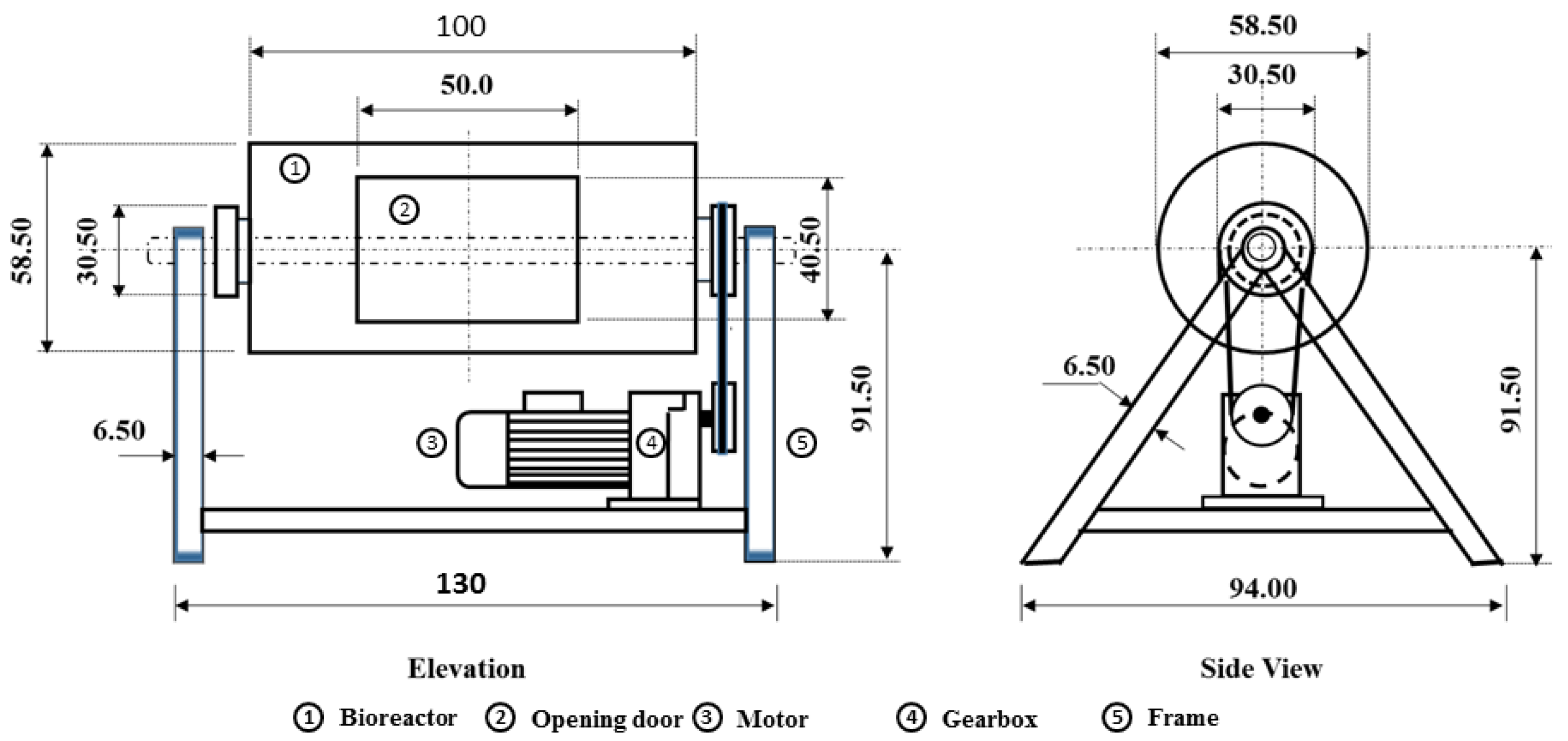
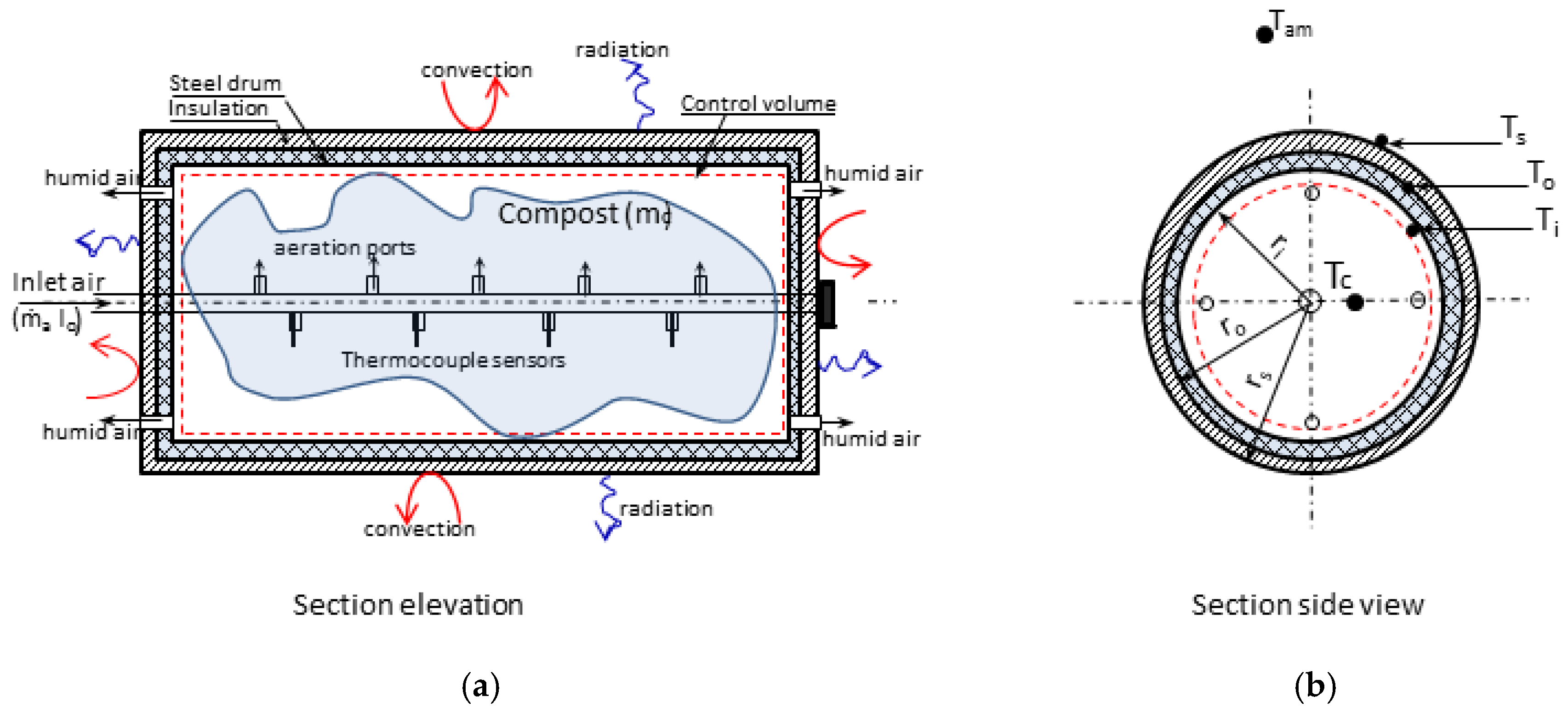
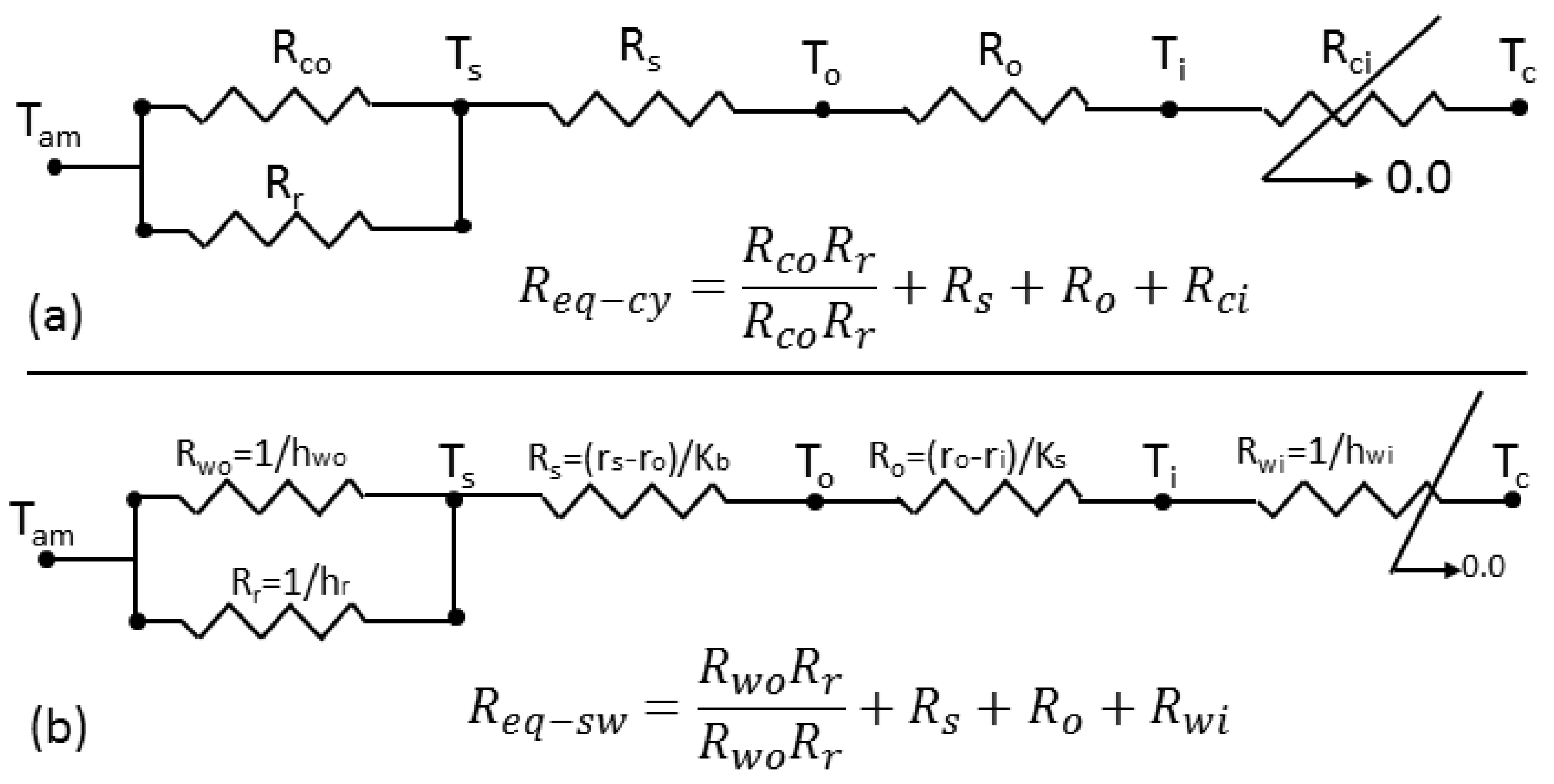
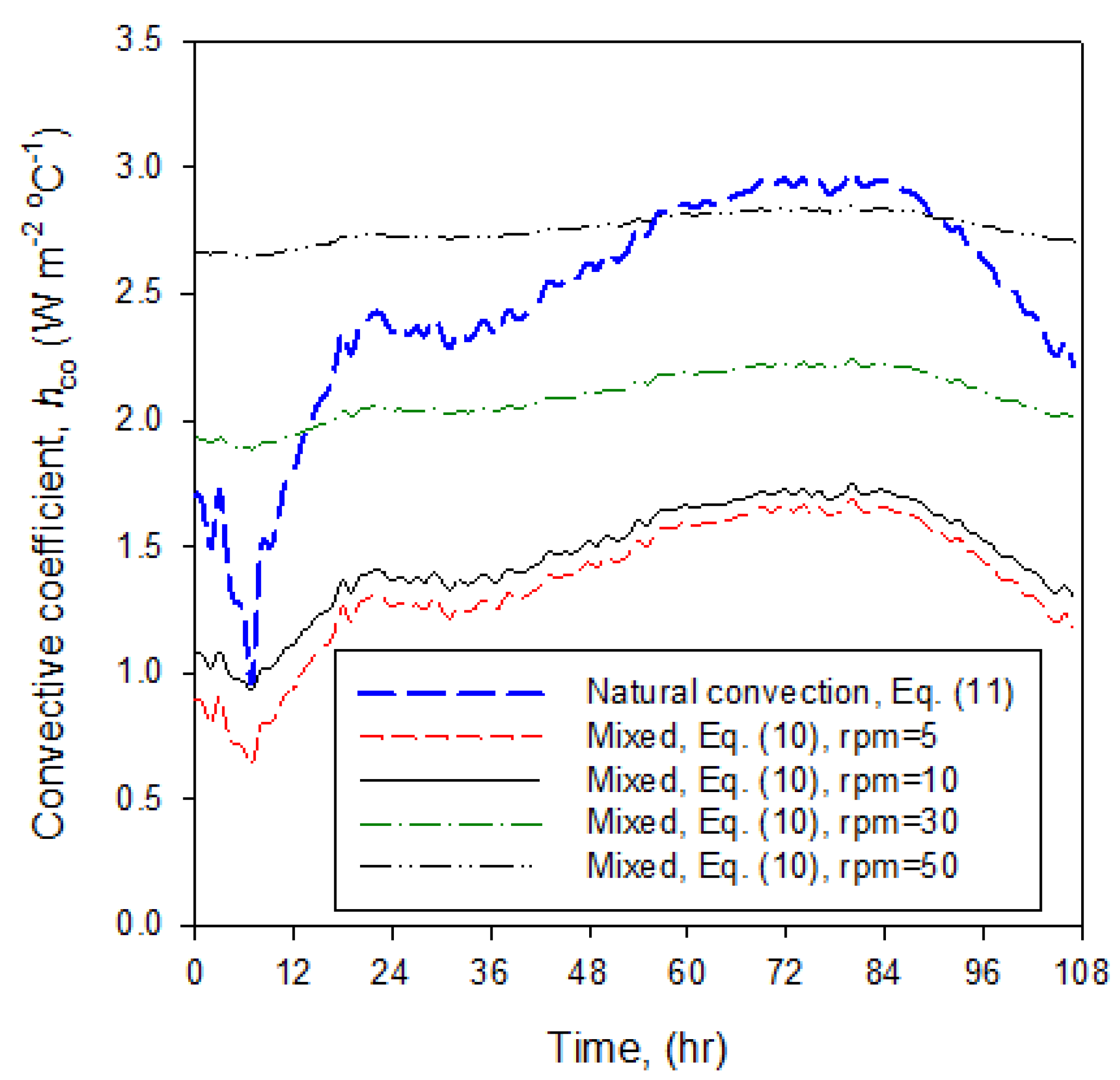
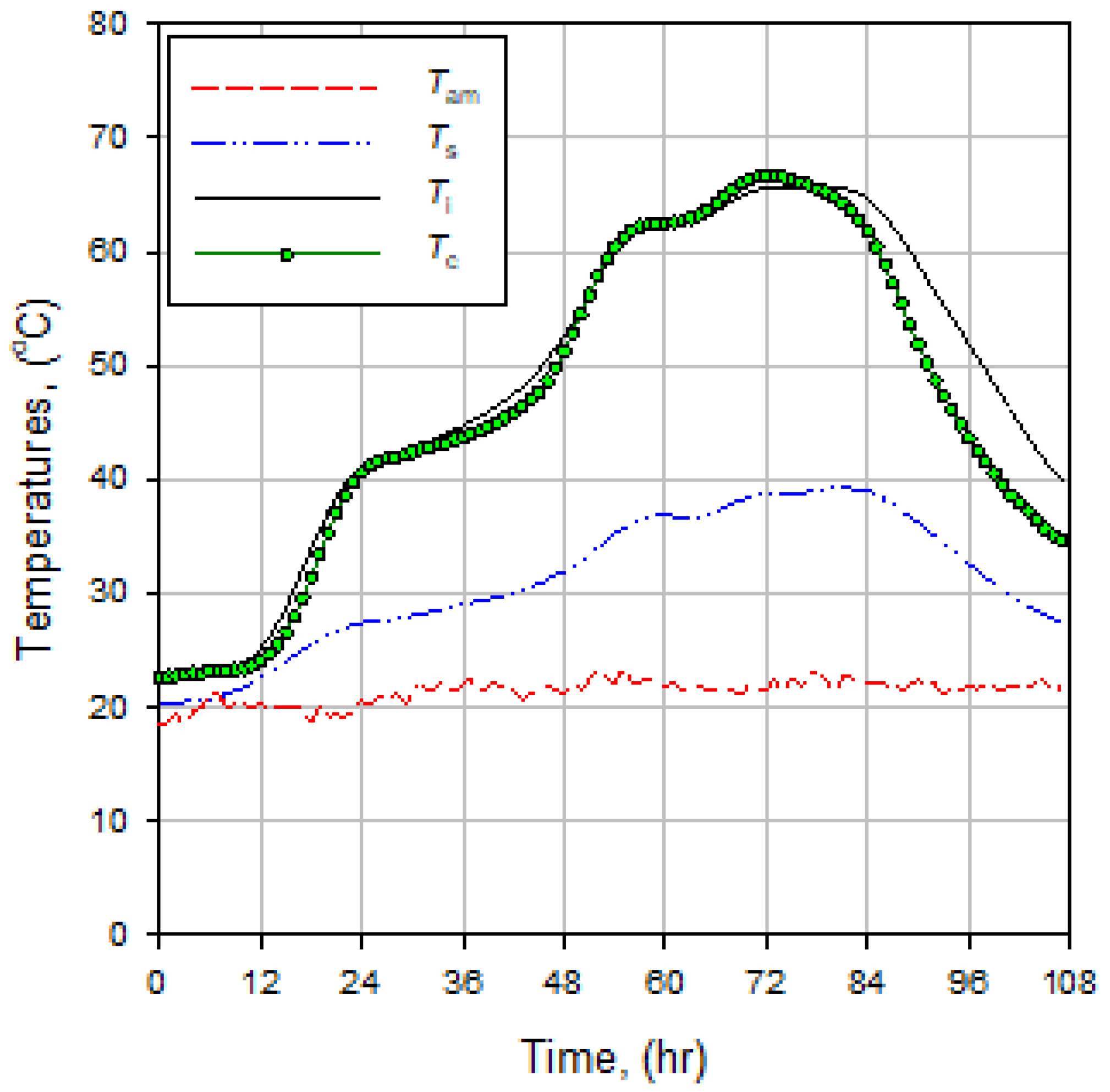
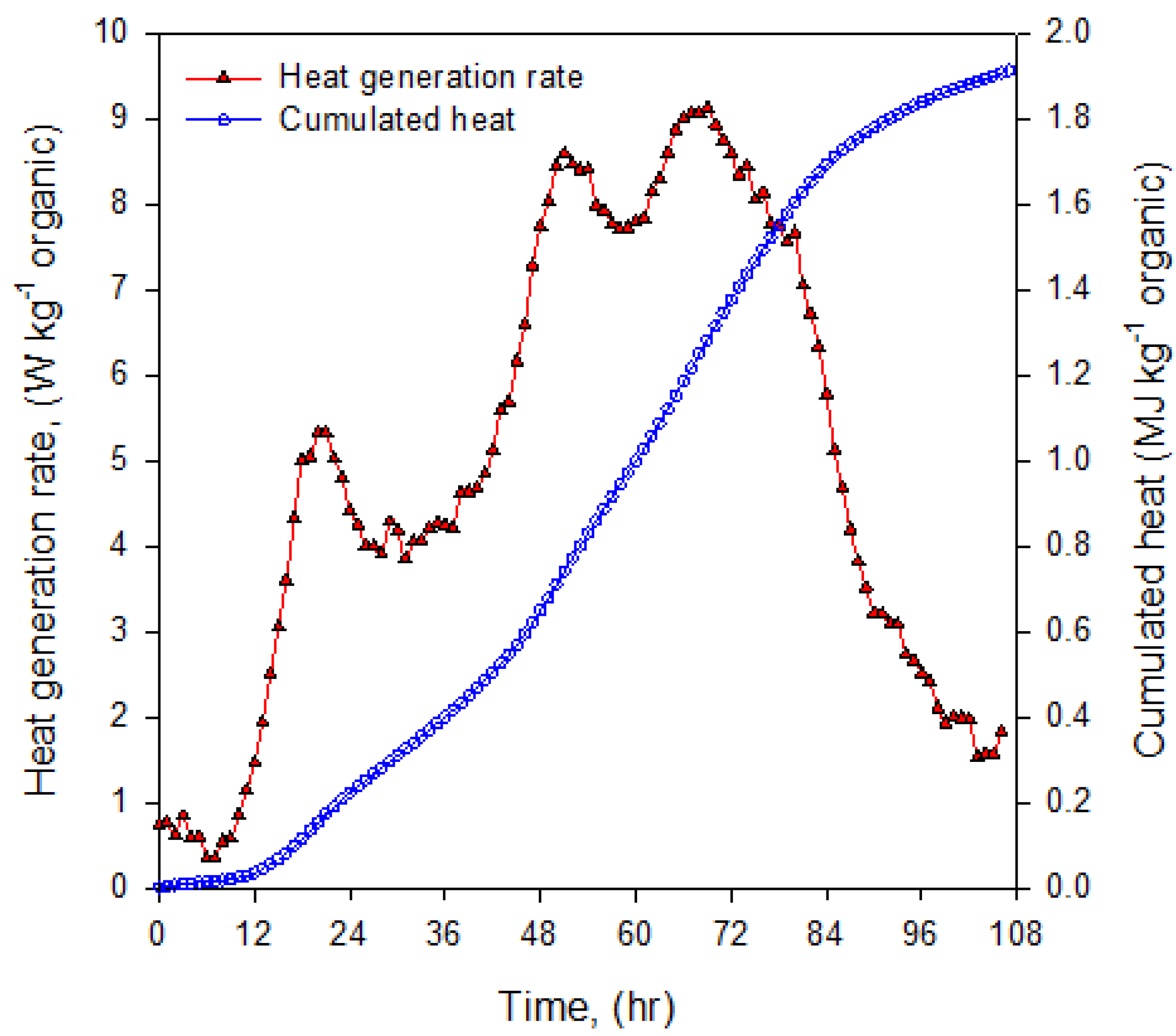
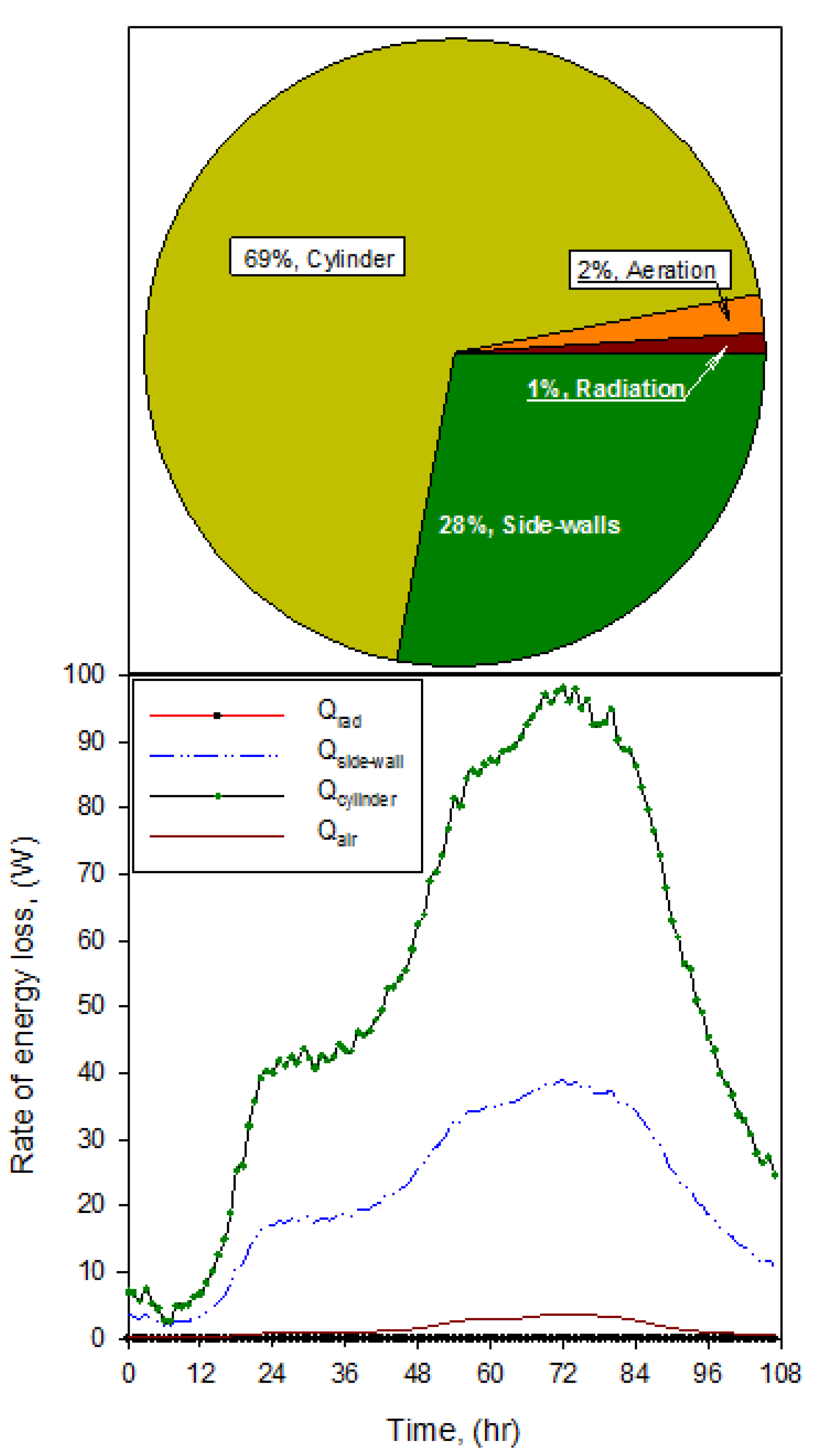

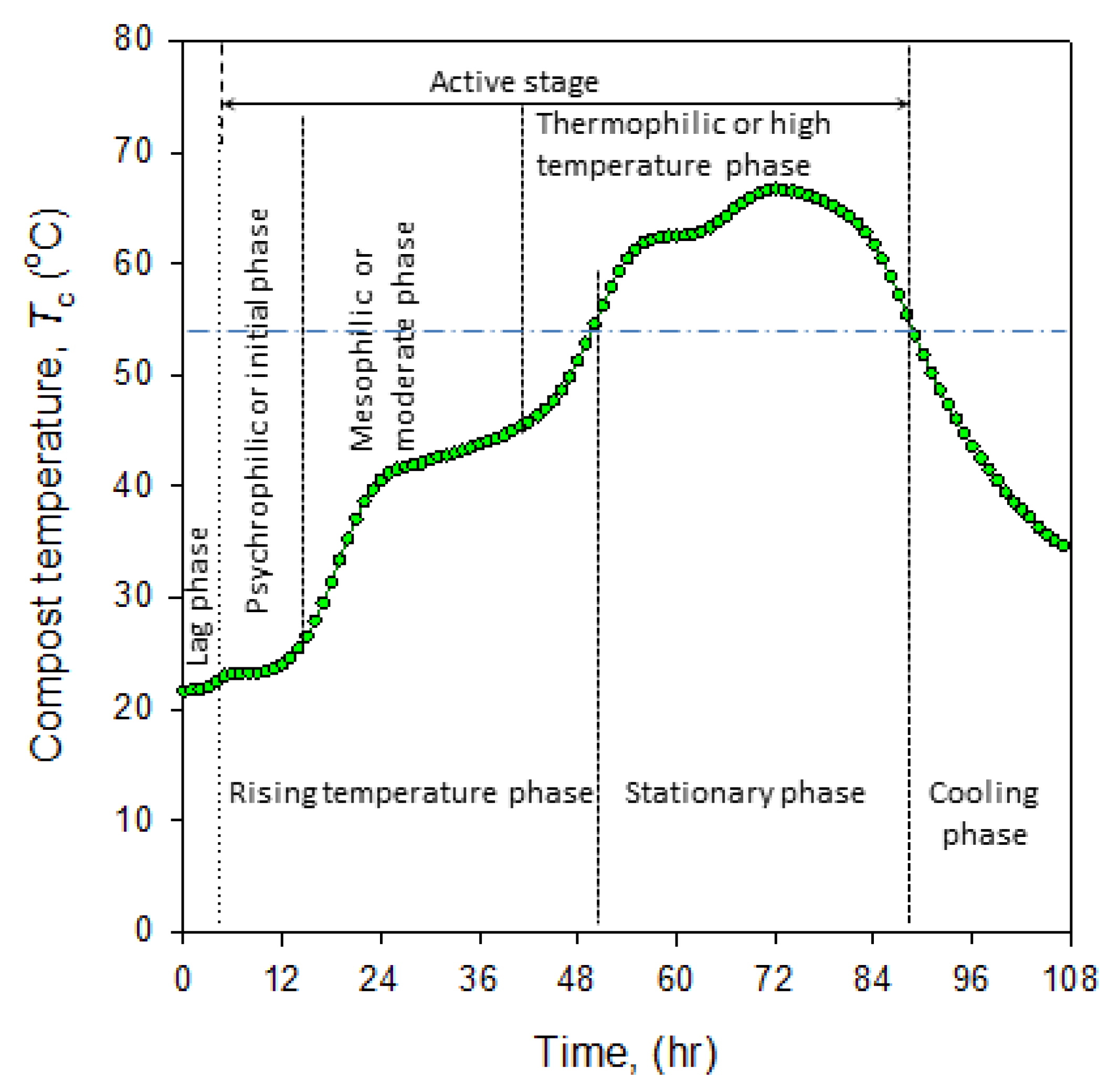
| Parameter | Value | Unit |
|---|---|---|
| Blanket insulation | ||
| thickness, (rs − ro) | 0.025 | m |
| thermal conductivity, Kb | 0.04 | W m−1 °C−1 |
| width, L | 1.0 | m |
| Steel drum | ||
| diameter, 2ro | 0.585 | m |
| Length | 0.914 | m |
| thickness, (ro − ri) | 0.007 | m |
| specific heat, Cps | 490 | J·kg−1·°C−1 |
| thermal conductivity, Ks | 46.0 | W·m−1·°C−1 |
| Compost material | ||
| mass, mc | 51.3 | kg |
| specific heat, Cpc | 1600 | J·kg−1·°C−1 |
| Aeration | ||
| mass flow rate, | 0.005 | m3·min−1 |
| specific heat, Cpa | 1007 | J·kg−1·°C−1 |
| density, ρ | 1.177 | Kg·m−3 |
| kinematic viscosity, γ | 1.57 × 10−5 | m2·s−1 |
| thermal conductivity, Ka | 0.0265 | W·m−1·°C−1 |
© 2018 by the authors. Licensee MDPI, Basel, Switzerland. This article is an open access article distributed under the terms and conditions of the Creative Commons Attribution (CC BY) license (http://creativecommons.org/licenses/by/4.0/).
Share and Cite
Alkoaik, F.N.; Abdel-Ghany, A.M.; Rashwan, M.A.; Fulleros, R.B.; Ibrahim, M.N. Energy Analysis of a Rotary Drum Bioreactor for Composting Tomato Plant Residues. Energies 2018, 11, 449. https://doi.org/10.3390/en11020449
Alkoaik FN, Abdel-Ghany AM, Rashwan MA, Fulleros RB, Ibrahim MN. Energy Analysis of a Rotary Drum Bioreactor for Composting Tomato Plant Residues. Energies. 2018; 11(2):449. https://doi.org/10.3390/en11020449
Chicago/Turabian StyleAlkoaik, Fahad N., Ahmed M. Abdel-Ghany, Mohamed A. Rashwan, Ronnel B. Fulleros, and Mansour N. Ibrahim. 2018. "Energy Analysis of a Rotary Drum Bioreactor for Composting Tomato Plant Residues" Energies 11, no. 2: 449. https://doi.org/10.3390/en11020449





